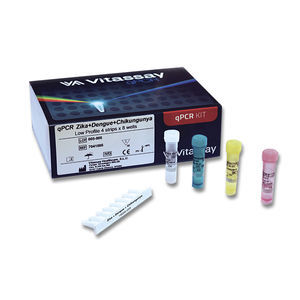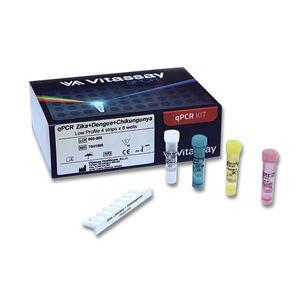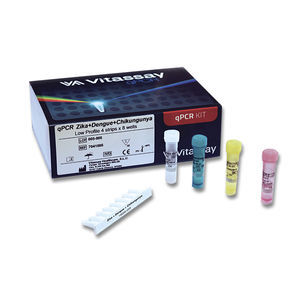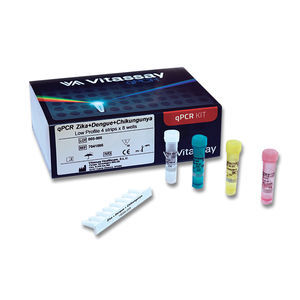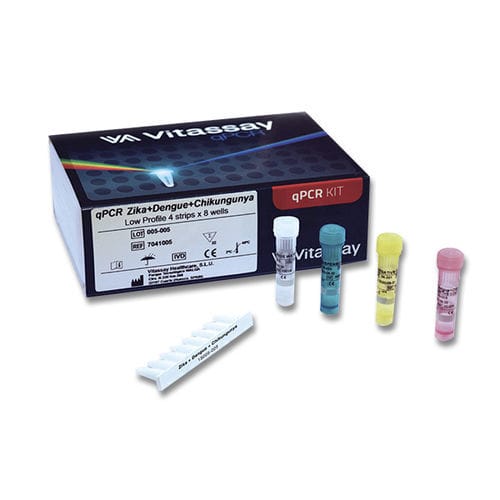
- Laboratory
- Laboratory medicine
- Infectious disease test kit
- VITASSAY HEALTHCARE S.L.
Infectious disease test kit 7041008DNA extractionClostridium difficileclinical
Add to favorites
Compare this product
Characteristics
- Applications
- for infectious diseases
- Application field
- DNA extraction
- Micro-organism
- Clostridium difficile
- Sample type
- clinical, laboratory
- Analysis mode
- for real-time PCR
Description
Vitassay qPCR Clostridium difficile allow the detection and differentiation of Clostridium
difficile by real-time PCR in clinical samples. The product is intended for use in the
diagnosis of Clostridium difficile infections alongside clinical data of the patient and other laboratory tests outcomes.
Transport and storage
• The reagents and the test can be shipped and stored at 2-40ºC until expiration
date stated in the label.
• The resuspended positive control should be stored at -20ºC. In order to avoid
repeated freeze/thaw cycles, it is recommended to distribute the content in
different aliquots.
• Keep all reagents in the darkness.
Additional equipment and material required
• DNA extraction kit
• Real-time PCR instrument (thermocycler) (Attached I)
• Centrifuge for 1.5 ml tubes
• Vortex
• Micropipettes (1-20 µl, 20-200 µl)
• Filter tips
• Powder-free disposal gloves
Summary
Clostridium difficile, which belongs to Clostridiaceae and more concretely to the
Clostridium genus, is a threat for patients undergoing antibiotic treatment, as it exploits
the weakening of the bacterial flora located in the gut, either by colonizing it or
overgrowing in it.
Nosocomial infections are widely regarded as the main way of contracting
pseudomembranous colitis, which is the disease generated by the action of Clostridium
difficile toxins. The most common symptom is bloody or watery diarrhea; rarer ones vary
from fever, to abdominal pain, changes in bowel habit or leukocytosis.
Catalogs
Vitassay_Catalogue
20 Pages
Related Searches
- Assay kit
- Solution reagent kit
- Blood assay kit
- Molecular biology reagent kit
- Plasma assay kit
- Infectious disease detection kit
- Blood rapid diagnostic test
- Diagnostic reagent kit
- Rapid lateral flow test
- Enzyme reagent kit
- Immunoassay rapid diagnostic test
- Molecular test kit
- Cassette rapid diagnostic test
- Virus rapid diagnostic test
- Respiratory infection test kit
- Optical assay kit
- Clinical assay kit
- Infectious disease rapid diagnostic test
- Buffer solution reagent kit
- Fluorescence assay kit
*Prices are pre-tax. They exclude delivery charges and customs duties and do not include additional charges for installation or activation options. Prices are indicative only and may vary by country, with changes to the cost of raw materials and exchange rates.





